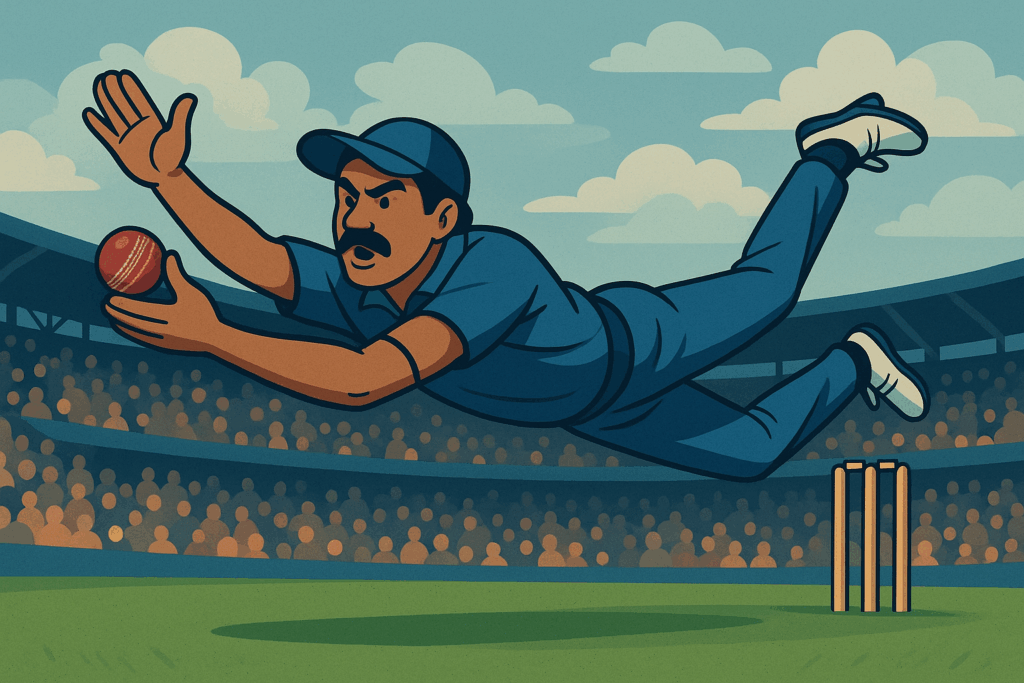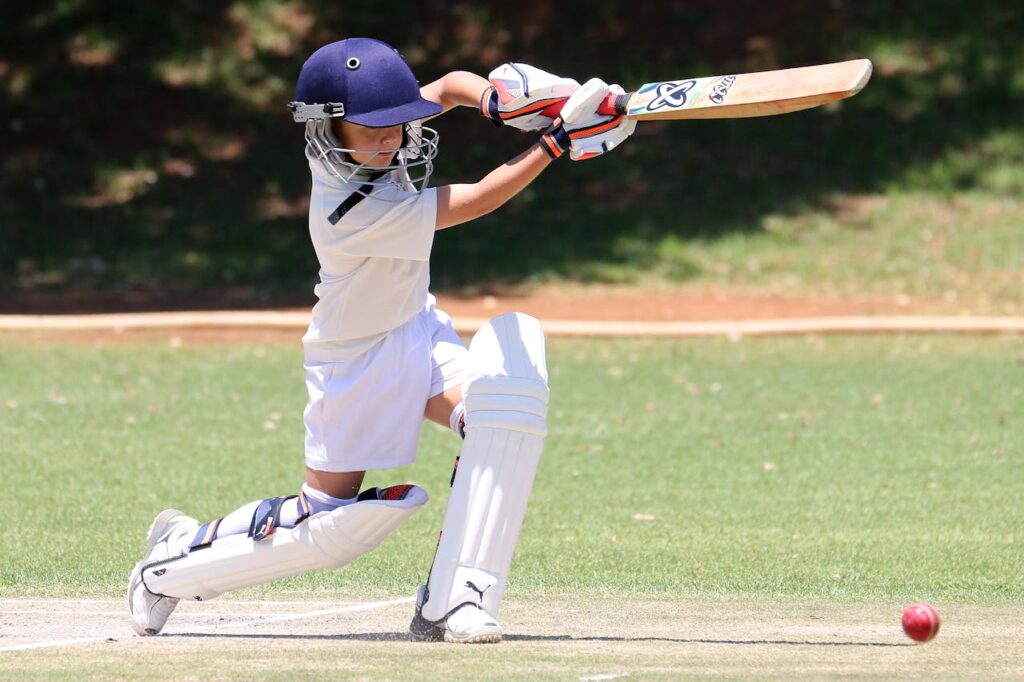Fielding in cricket is an act of poetry in motion. While batters etch their names on scoreboards and bowlers spearhead headlines with wickets, true connoisseurs know fielding is the silent assassin—the craft that has turned matches, won World Cups, and rewritten legacies. This is a realm defined not just by hands and reflexes, but by anticipation, presence of mind, and an unyielding hunger to chase lost causes.
To speak about the world best fielder requires us to look beyond statistics and numbers. It’s about obsession, transformation, and the evolution of cricket itself.
Fielding: The Game Changer in Modern Cricket
Before the advent of colored clothing, floodlit stadiums, and the high-octane IPL, fielding was the overlooked discipline—something teams did between bowling and batting turns. Gone are those days. Professional fielders now turn boundaries into electric fences, pressure into panic, and run-saving dives into folklore.
When experts analyze the best fielder in the world, what do they actually see?
- The leap that transforms a certain four into nothing.
- The run-out that breaks the deadlock, shifting momentum in a flash.
- The relay flick at the boundary, the impossible catch that fuels highlight reels for decades.
No bowler’s stats are complete without the hands behind their brilliance. No match is truly secure until it is sealed by a piece of fielding magic.
The Anatomy of a World-Class Fielder
To understand what makes the world’s greatest fielders, let’s break down the core attributes:
1. Reflexes and Anticipation
Elite fielders, whether in the covers or at backward point, are masters of micro-moments. They don’t merely react—they predict. Watch Jonty Rhodes read a batter’s shape before the stroke begins, or see Ravindra Jadeja silently glide across the turf, already moving before the shot is complete.
2. Agility and Athleticism
Fielding gyms breed their own stars. Today’s best cricket fielders of all time have gymnast’s cores, a sprinter’s speed, and a footballer’s hand-eye synchronization. The fastest fielders in cricket leap like panthers, sprint like gazelles, and recover balance mid-tumble.
3. Safe Hands
Few things in the sport are as celebrated as the “stickiest” hands in the business. Ricky Ponting, Mark Waugh, AB de Villiers, and Faf du Plessis have plucked balls from thin air at slip, point, and in the deep. The fielder with most catches in cricket hardly ever fumbles.
4. Throwing Accuracy
A single throw can unmake a set batter. Direct-hit run-outs are the fielder’s knockout punch. From Jadeja to Glenn Maxwell, from Herschelle Gibbs to Brendon McCullum, the bullet arm has become lethal.
5. Pressure Handling
The best fielding moments occur under the fiercest pressure: crunch semifinals, finals, or the death overs in a high-voltage IPL chase. The world best fielder is a specialist in panic control.
The Evolution of Fielding: From Utility to X-Factor
Before Rhodes belly-flopped, the world watched fielders as wicketkeepers first, safe catchers second. Standards shifted. Modern teams obsess about boundary riders, bullet throws, and “ring savers.”
Fielding drills are as detailed as batting slip practice. Technology—slow-motion breakdowns, biomechanics analyses—now shape fielding rosters.
Fielders today:
- Wear diving scars as badges of honor.
- Spread themselves across statistical leaderboards: all-time best catches, boundary saves, relay throws, and run outs.
- Enter highlight compilations: greatest fielding moments in cricket are Instagrammable art forms.
All-Time Icons: Cricket Fielding Legends Who Changed the Game
The argument for the world’s greatest fielders always begins with names that are synonymous with bravery, agility, and inspiration. Below, we chart the journey through cricket’s pantheon of geniuses.
Jonty Rhodes: The King of Fielding
Ask any purist: who is the king of fielding in cricket? The emphatic answer—Jonty Rhodes, South Africa’s dynamo.
Rhodes represented the revolution. It wasn’t just his legendary run-out diving parallel to the ground, but his anticipation at backward point, hunting run outs, and his unwavering energy across formats. He normalized, even glamorized, fielding as a primary skill.
Rhodes by the Numbers:
- Groundbreaking run-outs and direct-hit dismissals.
- He redefined “live wire” at point, forcing batters to reroute singles and doubles.
Ricky Ponting: The Slip Maestro and Close-In Genius
Modern Australia’s dominance owed much to Ponting—not only as a batter, but also the best Australian fielder in history at backward point and slip.
- His low, crouched position at close-in, and those lightning-quick reflexes—Ponting was the breaker of partnerships.
- Ponting’s highlights? Visionary run outs, one-handed slips, and stunning catches under pressure in Finals.
AB de Villiers: Cricket’s Superhuman
If cricketers had capes, de Villiers would be the world’s best fielder flying across square leg and mid-wicket.
- 360° fielding, balancing acrobatics with safe hands.
- De Villiers stared down the hardest catches: diving left, right, forward, backward.
Ravindra Jadeja: The Modern Standard
India’s pride, Jadeja has set the global benchmark for the best fielder in the world today.
- Electric on the boundary, always threatening a direct-hit run out.
- His left-arm bullets test any batter daring a second run or streaky single.
- “Sir Jadeja” has made the deep cover and backward point his personal fortress.
Faf du Plessis: South Africa’s Safehouse
Faf’s elegance is matched only by his reliability and courage.
- From rocket-armed throws at the boundary to catching sitters and screamers under pressure, du Plessis is peerless.
- He’s the man you want under a skier in the final over.
Others in the Hall of Fame
- Herschelle Gibbs: Blended speed with anticipation, forever redefining cover fielding.
- Andrew Symonds: Australia’s bulldog, superb both inside the circle and on the rope.
- Paul Collingwood: England’s answer to Rhodes—known for epic one-handed specials in the ring.
- Kieron Pollard: Outfield acrobatics, one-handed boundary grabs, and relay catches that defy gravity.
- Glenn Maxwell: Freak reflexes, and a pioneer of sensational boundary rescues.
Statistical Breakdown: Best Fielder Stats and Records
| Name | Catches (Intl) | Run-outs (Intl) | Formats excelled | Iconic Position |
|---|---|---|---|---|
| Jonty Rhodes | 105 | 34 | ODI | Backward Point |
| Ricky Ponting | 364 | 80+ | Test, ODI | Slip, Point |
| AB de Villiers | 222 | 45+ | ODI, Test, T20 | Wicket/Keeper, Ring |
| Ravindra Jadeja | 135 | 40+ | All formats | Cover, Point, Deep |
| Faf du Plessis | 164 | 35+ | All formats | Outfield, Ring |
| Mark Waugh | 289 | 60+ | Test, ODI | Slip |
Note: Figures are illustrative to capture orders of greatness; exact numbers can shift with ongoing careers.
Format-Specific Masters: Test, ODI, T20 Fielder Comparison
Different cricket formats demand evolved skillsets. Here’s how the best fielders adapt:
Test Cricket
- The slip cordon is sacred. Legends: Mark Waugh, Rahul Dravid, Jacques Kallis.
- Patience, soft hands, swift reflexes.
ODI Cricket
- Value in runs saved and quick boundary work.
- Dynamic ring fielders like Collingwood, Rhodes, Pollard star here.
T20 Cricket
- Likely to witness the best catchers mid-air, match-defining boundary saves.
- Jadeja, Maxwell, Pollard dominate with barely human reactions.
Country-by-Country: The Fielding Capitals of Cricket
Fielding quality now serves as a badge of national pride. Which country has bred the greatest fielders?
Best Indian Fielders
- Ravindra Jadeja: No contest, India’s gold standard.
- Mohammad Kaif: Puspendous energy during his heyday.
- Suresh Raina: Masterful in both the infield and deep.
- Virat Kohli: Underrated for his ability to create run outs.
Best Australian Fielders
- Ricky Ponting: The greatest of Aussie legends.
- Andrew Symonds: Unmatched in outfield, loved a direct hit.
- David Warner: Modern lightning at backward point, mid-off.
Best South African Fielders
- Jonty Rhodes: The global benchmark.
- Faf du Plessis: Tireless inside and outside the circle.
- Herschelle Gibbs: Pioneer at cover and point.
Best English Fielders
- Paul Collingwood: Reliable, inspirational.
- Ben Stokes: Epic grabber, especially on the biggest nights.
Best West Indian Fielders
- Kieron Pollard: Outfield king, gravity-defying one-handers.
- Dwayne Bravo: Agile and creative; especially in T20s.
Unforgettable: The Greatest Fielding Moments in Cricket
Cricket’s memory is shaped as much by miraculous fielding as sixes and hat-tricks.
Let’s relive some game-changing moments:
- Jonty Rhodes’ Run Out (World Cup):
A diving, airborne Rhodes destroys the stumps to run out Inzamam-ul-Haq—the birth of modern fielding. - Paul Collingwood’s One-Handed Screamer:
At backward point, stretching full, he conjures a classic impossible catch. - Ravindra Jadeja’s Rocket Throw:
From the boundary, one stumps direct hit—sending Ben Stokes back and turning the contest. - Kieron Pollard’s One-Handed Grab on the Rope:
Left-hand, full flight, then coolly tosses the ball before crossing, steps outside, leaps back, and completes the catch—a display of athletic intelligence. - AB de Villiers’ “Spider-cam” Catch:
Plucks a certain six out of thin air—leaving commentators, fans, and batters speechless.
The IPL Factor: Best Fielder in IPL
The Indian Premier League—the gladiatorial modern circus—has produced a new breed of fielding gladiators.
High-voltage matches, razor-thin margins, packed stadiums—it’s fielding at its nerviest.
Current IPL Fielding Standouts:
- Ravindra Jadeja: Impossible stops, direct hits, game-turning grabs.
- Kieron Pollard: Legendary at long-on and long-off.
- Faf du Plessis: Captaining, catching, leading by example—never drops a skied chance.
- Suryakumar Yadav: Versatile from ring to rope, lightning quick off the mark.
The league rewards the fastest fielders, boundary acrobats, and the shrewd tacticians who cut crucial singles and twos.
Young Phenom Alert: The Youngest Best Fielders in Cricket
Who are the rising stars future-proofing the art?
- Shubman Gill (India): Terrific at cover and point; nails direct hits at pace.
- Riyan Parag (India): T20 dynamo, always hunting for a moment of magic.
- Cameron Green (Australia): Tall, athletic, imposes himself inside the ring.
Fielding is now a central plank for selectors—the days of “hide them in the field” are gone.
Breaking the Stereotype: Best Wicketkeeper Fielder in the World
While fielders in the ring or boundary often seize the limelight, the wicketkeeper is the team’s silent sentinel:
- Mark Boucher (South Africa): Unflinching, racking up catches-at-stumps and acrobatic saves.
- Adam Gilchrist (Australia): Redefined the wicketkeeper’s influence—changed games with his glove work and supreme agility.
- MS Dhoni (India): Inventor of the streetwise run-out, lightning-fast hands.
Wicketkeepers lead fielding squads with their anticipation and ability to “read” the game like no one else.
Cricket Fielding Skills and Drills: Behind the Highlight Reels
Elite fielding is the product of relentless, creative practice.
Let’s peek inside closed nets and team huddles:
- Slip Cordon Reactions: Hundreds of balls launched at every angle, every day.
- Boundary Relay Drills: Celebrate the “flick back” and team-catch as much as direct takes.
- Ground Fielding: Targets placed. Over after over—diving, tumbling, popping up and throwing in one movement.
- One-Handed Training: Simulating pressure—bare-handed grabs off grass or turf to prepare for real in-game stunners.
- Direct-Hit Competitions: Teams challenge each other on run-outs in mock match conditions.
Modern coaches know: fielding wins just as many tournaments as big hundreds or five-wicket hauls.
What Truly Makes the World Best Fielder?
Ultimately, fielding’s magic lies in a mix of nature and nurture.
- Instinct: No one can teach the split-second leap or the reckless, calculated dive.
- Obsession: The best fielders are compulsive; they rehearse even when no one is looking.
- Fearlessness: Caring little for bruises, burns, or crashing into advertising boards.
- Tactical Genius: Reading the batter’s body language, staying one step ahead.
To be the world’s best fielder is to be part athlete, part stunt artist, part visionary.
Answering the Big Questions: Cricket Fielding FAQ
Who is the best fielder in the world today?
Ravindra Jadeja. His ground coverage, direct hits, and relentless energy set the global gold standard.
Who has the most catches in international cricket history (non-wicketkeeper)?
Ricky Ponting. His tenure in slips and close-in positions produced a tidal wave of memorable sharp takes.
Who is the greatest fielder of all time?
For most, Jonty Rhodes. He changed the way the world viewed fielding, making it both an art form and a match-winning science.
Who are the greatest fielders by country?
- India: Ravindra Jadeja, Suresh Raina, Mohammad Kaif
- Australia: Ricky Ponting, Andrew Symonds
- South Africa: Jonty Rhodes, Faf du Plessis
- England: Paul Collingwood, Ben Stokes
What are the fielding records that matter most?
- Most catches in Tests/ODIs (excluding wicketkeepers)
- Most run outs (direct and assisted)
- Fastest reaction catches (as measured by unofficial metrics)
- Most runs saved in a series/tournament
Fielding’s Future: The Next Frontier
Cricket’s athletic ceiling keeps rising.
- AI-based analytics now break down milliseconds in reaction time and boundary “coverage zones.”
- High-performance fitness programs focus specifically on agility, not just strength or endurance.
- Specialist fielding coaches, once a rarity, drive modern team culture.
- Youth cricket: Fielding is prioritized as highly as batting or bowling, turning natural athletes into complete cricketers.
Soon, we may see the “pure fielder” as a playable all-round role—someone picked for their disruptive glove/field game alone.
Key Takeaways: Decoding the World’s Best Fielders
- The world’s greatest fielders blend athletic genius, anticipation, and fearlessness, rising to the sport’s most demanding moments.
- Legends like Jonty Rhodes, Ricky Ponting, AB de Villiers, Ravindra Jadeja, and Faf du Plessis have authored cricket’s defining fielding folklore.
- Modern fielders are multi-format, multi-position dynamos, switching seamlessly from slip to cover to outfield.
- Fielding records—highest catches, run outs, boundary saves—are increasingly important in the game’s legacy and team strategy.
- Youth is revolutionizing fielding—as younger players enter, the ceiling for brilliance keeps rising.
Conclusion: The Silent Champions of Cricket
Batting and bowling will always be written in bolder fonts. Yet cricket’s secret rhythm pulses loudest in fielding: the spark of a turning match, the force invisible until revealed by the replay screen or echoes from the stands.
The world best fielder is the cricketer who redefines what is possible. They are the player whose shadow causes a batter to hesitate; whose anticipation raises the hopes of every teammate on the park; whose dive, leap, or bullet throw leaves us breathless, cheering, disbelieving.
Ask those who know: matches are often remembered not for the fastest fifty or the best five-for, but for that one staggering catch or improbable run-out. In the grand tapestry of cricket, the fielder’s touch is what transforms games from good to unforgettable.
So next time you watch a high-pressure match, don’t just follow the ball. Look for the anticipation in Jadeja’s eyes, the readiness in Ponting’s crouch, the hunger in the new kid at point. That’s where the real story—the untold art of cricket—unfolds.
The World’s Best Fielder: Not a Name, but a Mission
The crown never sits still. Cricket’s best fielders now, and forever, are the ones who chase the impossible—and catch it.



